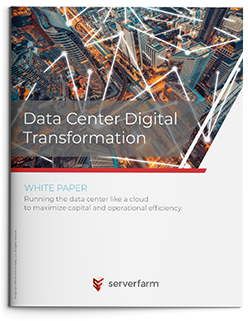Importantly, like any project, the start of digital transformation must begin with a problem description, a clear opportunity or an ambitious goal. What’s the “Why” your organization needs to start digital transformation — it could be about improving customer experience and increasing productivity while lowering operational costs.
Which companies can most benefit from a Digital Transformation?
In my opinion, there is only one possible answer: every company!
A well-implemented digital transformation will improve business operations and ultimately gain a competitive advantage, regardless of the size of the market and how competitive the niche is.
The fact is that if companies are to grow with the rapid pace of today’s digital change, they must work to increase efficiency with technology as an enabler wherever possible.
We’d love to hear about your experiences helping others with Digital Transformation. In your experience, how has Digital Transformation helped improve operations, processes and customer experiences? We’d love to hear some stories if possible.
There are many examples, and there is certainly no shortage of opportunities for digital transformation in the market. The market is full of success stories showing that companies have moved from the traditional analog to the new digital. The positive effect of the COVID period is that many more companies have started working digitally or providing digital services, from designing products to holding virtual meetings with suppliers, virtual building tours, and assessing the functionality of products and services before offering them to customers. The digital way of working has changed the way different organizations do business in different sectors.
For example, some companies use augmented reality applications to introduce products and show customers exactly what they are buying. This application allows users to switch between different colors so that the customers are more convinced of what they are buying without visiting the store. We regularly gave virtual tours of our data centers because travel was simply not allowed. This has led us to use this digital option more often to provide our customers an expedited first impression even though travel is permitted again.
Banks and financial institutions have started using online video chat services for a better digital experience to improve communication and increase online engagement resulting in higher satisfaction, retention and new customer growth.
Has integrating Digital Transformation been a challenging process for some companies? What are the challenges? How do you help resolve them?
It is, of course, a challenge. The biggest challenge is getting started. Implementing change is often a difficult subject in enterprise organizations. It is important to define clear goals and ensure that the entire organization supports the digital transformation. Also, it is important to continue to communicate and train so your employees remain connected.









 One of the books I recommend is, Start with Why by Simon Sinek. While the content is very business-focused, there is a huge application to my own life. It helps me question if I really know “why” I do what I do. This question guides me to set priorities and focus on the things that truly matter.
One of the books I recommend is, Start with Why by Simon Sinek. While the content is very business-focused, there is a huge application to my own life. It helps me question if I really know “why” I do what I do. This question guides me to set priorities and focus on the things that truly matter.
 Jochem Steman
Jochem Steman